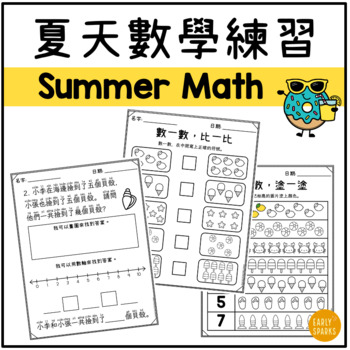Summer Math Worksheets for K-2 Traditional Chinese 夏天數學練習 繁體中文
- PDF
Description
These Summer Math Worksheets are perfect for your kindergarteners, first, and second graders to practice math skills such as number sense, comparing numbers, addition and subtraction within 10, and word problems in Chinese. Students will see summer symbols such as lemonade and seashells and practice Chinese and mathematics proficiencies. It's great to use these worksheets in your summer thematic unit, as homework, or as summer work.
What is included:
- Ten Frame 夏天塗一塗
- Count and Color 數一數,塗一塗
- I Know My Number Sequence 我會連續寫數字(10以内和20以内)
- Count and Compare 數一數,比一比
- Add/Subtract and Color 算一算,塗一塗
- Add and Subtract within 10 十以內加減運算
- Word Problems 十以內應用題
❤❤The packet is in black and white ONLY.
❤❤This resource is in Traditional Chinese.
✦✦✦✦✦Click on the green preview button to see some sample pages.✦✦✦✦✦
We hope you and your students enjoy this resource!
Please leave a comment and let us know how we're doing!
Get more FREE printables and resources by visiting our website:
Pinterest: earlysparks
Youtube: Early Sparks
Instagram: findearlysparks
TPT: find early sparks





